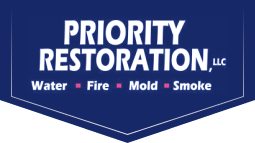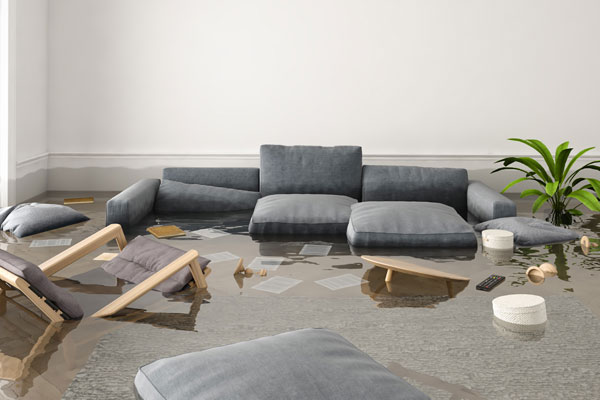Did you know that when it comes to water damage, the cleanup depends on what type of water caused the damage? While all water infiltration can wreak havoc on building materials, the three types of water will dictate how cleanup is handled.
Three Types of Water
The first type of water is clean water which comes from rain, condensation and leaky pipes. Clean water that infiltrates a home does not pose an immediate health risk since there are minimal contaminants. No special equipment is required for the job other than for getting the water out, dried up and the space recovered. Although clean water does not pose an immediate health risk, it is advisable to get it taken care of within 48 hours, or the water in contact with various surfaces could become gray water.
The second type of water is gray water which comes from showers, sinks, clean toilets and washing machines. Gray water has potential to contain some contaminants. Again, it is advisable to take care of gray water within 48 hours, or it may progress to the next category, black water.
The third type of water is black water, and this category has a very high risk of potentially harmful contaminants, and should only be handled by professional water damage restoration companies. Black water often is a result of sewage back ups or river flooding. Special equipment, protective gear and protocols are required for black water cleanup to ensure that no residual contaminants such as E.coli bacteria remain in the dried out materials.
Mold, a Major Concern
When water infiltration occurs, you have about 24 hours until the water can start causing damage like mold, but hidden condensation can cause mold over a period of time before getting noticed. Since mold can be toxic to people, larger areas should only be handled by a professional. For smaller areas, mold on drywall can be cut away completely, bagged up, and thrown away immediately. Any materials under an area of mold should be inspected for growth in case it spread before it was addressed. When searching for a mold remediation in Philadelphia, choose one with a proven track record of skilled and timely service: Priority Restoration, LLC. Don’t mess around with mold.
Remove Mold Spores
Since mold spores may still remain after moldy materials have been removed, the entire area that received water damage should be disinfected with a bleach solution to kill off any residual spores. Homeowners in Philadelphia facing mold issues and potential residual mold spores should contact a professional mold removal company in Philadelphia to strategically eliminate the potentially dangerous issue of mold spread.
Dry Out the Water-Damaged Area Quickly and Completely
Besides the concern for mold, water can weaken structures if not addressed quickly enough. As a first step when facing water damage, remove as much of the water-logged porous materials such as carpet, drywall, or insulation as possible since these materials cannot be repaired, and will impede the drying and restoration process. Even wood can be difficult to dry without long-term damage, so keep an eye on water-damaged wood to see how it has been affected before deciding to forgo replacement.
Check for Structural Integrity
Where water damage has occurred in critical structures such as floor or ceiling joists, call in a professional to inspect the structure to make sure it is still structurally sound. Water can weaken wood fibers causing sagging and overall reduced load-bearing capabilities. Weakened and damaged structural components need to be replaced, and skipping this important step could mean more damage, more money and even a dangerous situation down the road.
Where Does Water Get In?
Besides the obvious reasons for water infiltration such as a hurricane with gale force winds blowing rain into every open crevice it can find, or a burst pipe in 20 degree weather, there are many unfortunate sources of water infiltration and subsequent damage.
A leak in the roof is a major source of water damage, typically when a roof is older and the shingles are cracked or deteriorating. A savvy homeowner should periodically check the attic for any water infiltration, as undetected water leaks can cause a lot of damage over a long period of time. In colder climates during winter, ice dams that build up on and over gutters can cause melting snow on a roof to back up instead of rolling off the roof. Although most homes have an ice and water shield on the edges of the roof underneath shingles, if ice dams are large enough, the water can start backing up where the shields end and slip underneath the shingles onto the sheathing below causing major water damage.
Improperly connected or sealed water pipes inside the home can be a hidden source of water infiltration and damage. Unfortunately, this type of damage is usually not detected until it becomes a bigger problem and starts showing up as mold in surrounding materials or gives off a musty odor.
There are many ways that water can wreak havoc, as it takes the path of least resistance. The best option is prevention during the construction phase, using tried and true anti-water infiltration techniques.
Call Priority Restoration Now!
24 hours a day / 7 days a week
215-281-3473
When water begins to pay an unwelcome visit into your home, a quick search for water damage restoration in Philadelphia will yield the best company for the job, Priority Restoration, LLC. The water damage restoration technicians at Priority Restoration, LLC are on standby to answer your emergency call. We are your expert water damage team!









